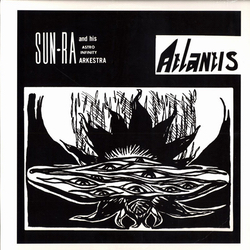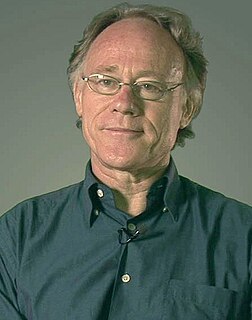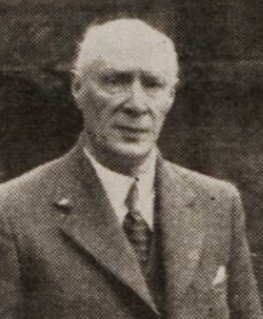 W
WAtlantis is a fictional island mentioned in an allegory on the hubris of nations in Plato's works Timaeus and Critias, wherein it represents the antagonist naval power that besieges "Ancient Athens", the pseudo-historic embodiment of Plato's ideal state in The Republic. In the story, Athens repels the Atlantean attack unlike any other nation of the known world, supposedly bearing witness to the superiority of Plato's concept of a state. The story concludes with Atlantis falling out of favor with the deities and submerging into the Atlantic Ocean.
 W
WAntillia is a phantom island that was reputed, during the 15th-century age of exploration, to lie in the Atlantic Ocean, far to the west of Portugal and Spain. The island also went by the name of Isle of Seven Cities.
 W
WAtlantis is an album by American jazz musician Sun Ra and his Astro-Infinity Arkestra, released in 1969 by El Saturn Records.
 W
WThe Book of Dzyan is a reputedly ancient text of Tibetan origin. The Stanzas formed the basis for The Secret Doctrine (1888), one of the foundational works of the theosophical movement, by Helena Petrovna Blavatsky.
 W
WCancho Roano is an archaeological site located in the municipality of Zalamea de la Serena, in the province of Badajoz, Spain. Is located three miles from Zalamea de la Serena in the direction of Quintana de la Serena Quintana, in a small valley along the stream Cagancha.
 W
WThe Critical Eye is a Discovery Science Channel documentary series examining pseudoscientific and paranormal phenomena. The eight-part documentary series aired from October 2002 through February 2003 and was hosted by actor and scientific skeptic William B. Davis.
 W
WLocation hypotheses of Atlantis are various proposed real-world settings for the fictional island of Atlantis, described as a lost civilization mentioned in Plato's dialogues Timaeus and Critias, written about 360 B.C. In these dialogues, a character named Critias claims that an island called Atlantis was swallowed by the sea about 9,200 years previously. According to the dialogues, this story was passed down to him through his grandfather, also named Critias, who heard it from his own father, Dropides, who had received it from Solon, the famous Athenian lawmaker, who heard the story from an Egyptian sanctuary. Plato's dialogues locate the island in the Atlantic Pelagos "Atlantic Sea", "in front of" the Pillars of Hercules and facing a district called modern Gades or Gadira (Gadiron), a location that some modern Atlantis researchers associate with modern Gibraltar; however various locations have been proposed.
 W
WManly Palmer Hall was a Canadian-born author, lecturer, astrologer and mystic. He is best known for his 1928 work The Secret Teachings of All Ages. Over his 70 year career, he gave thousands of lectures, including two at Carnegie Hall, and published over 150 volumes. In 1934, he founded The Philosophical Research Society in Los Angeles, which he dedicated to the "Truth Seekers of All Time", with a research library, lecture hall and publishing house. Many of his lectures can be found online and his books are still in print.
 W
WGraham Bruce Hancock is a British writer and journalist. He is known for his pseudoscientific theories involving ancient civilizations, Earth changes, stone monuments or megaliths, altered states of consciousness, ancient myths, and astronomical or astrological data from the past.
 W
WThe Hiéron du Val d'Or was a Catholic esoteric secret society in France, which existed from 1873 until 1926. It was founded by a Jesuit Victor Drevon and the half-Basque, half-Russian Alexis de Sarachaga. It was allied to concepts of royalism and was culturally conservative; it sought to erect a Catholic hermetic freemasonry, contrary to the anti-clerical freemasonry of Grand Orient de France and was particularly devoted to Christ the King.
 W
WOrichalcum or aurichalcum is a metal mentioned in several ancient writings, including the story of Atlantis in the Critias of Plato. Within the dialogue, Critias claims that orichalcum had been considered second only to gold in value and had been found and mined in many parts of Atlantis in ancient times, but that by Critias's own time orichalcum was known only by name.
 W
WThe Pillars of Hercules was the phrase that was applied in Antiquity to the promontories that flank the entrance to the Strait of Gibraltar. The northern Pillar, Calpe Mons, is the Rock of Gibraltar. A corresponding North African peak not being predominant, the identity of the southern Pillar, Abila Mons, has been disputed throughout history, with the two most likely candidates being Monte Hacho in Ceuta and Jebel Musa in Morocco.
 W
WRoot races are stages in human evolution in the esoteric cosmology of theosophist Helena Petrovna Blavatsky, as described in her book The Secret Doctrine (1888). These races existed mainly on now-lost continents. Blavatsky's model was developed by later theosophists, most notably William Scott-Elliot in The Story of Atlantis (1896) and The Lost Lemuria (1904). Annie Besant further developed the model in Man: Whence, How and Whither (1913). Both Besant and Scott-Elliot relied on information from Charles Webster Leadbeater obtained by "astral clairvoyance". Further elaboration was provided by Rudolf Steiner in Atlantis and Lemuria (1904). Rudolf Steiner, and subsequent theosophist authors, have called the time periods associated with these races Epochs.
 W
WJames Lewis Thomas Chalmers Spence was a Scottish journalist, poet, author, folklorist and occult scholar. Spence was a Fellow of the Royal Anthropological Institute of Great Britain and Ireland, and vice-president of the Scottish Anthropological and Folklore Society. He founded the Scottish National Movement.
 W
WThe Sphinx water erosion hypothesis is a fringe claim, contending that the Great Sphinx of Giza and its enclose walls eroded primarily due to ancient floods or rainfalls, attributing their creation to Plato's lost civilization of Atlantis over 11,500 years ago.